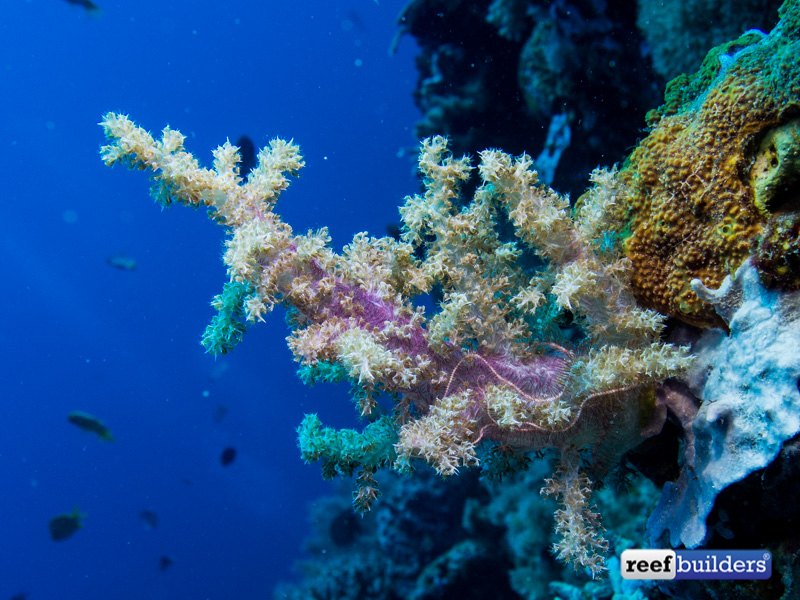Stereonephthya is an uncommon soft coral which is seriously underrated, both as an aquarium coral, and as a unique member of the coral reef community. The simplest way to describe Stereonephthya is that it’s the lovechild of photosynthetic Nephthea and non-photosynthetic Dendronephthya, both in appearance, and in life history.
Colonies of Stereonephthya don’t usually grow very tall, with branches usually maxing out at around 12 to 18 cm high before growing more offshoots from the base. This genus has been erroneously referred to as Neospongodes in the aquarium literature, this latter genus being strictly endemic the Caribbean sea compared to the wide-ranging Stereonephthya of the Indo-Pacific. In 2005 a new genus was erected, Chromonephthea, which incorporated several members of Stereonephthya and other Nephtheid genera, but we’re just going to stick to talking about ‘Stereos’.
This unassuming soft coral is not all that common in the wild, and even when it is found it rarely forms the kind of large colonies of Nephthea and Dendronephthya that are very abundant on most coral reef habitats. While on our expedition to the island of Sumbawa Indonesia, we had the good fortune of diving one particular reef site on which Stereonephthya was particularly well represented, in abundance and diversity.

At this shallow coral reef site we observed Stereonephthya in many different colors including pink, purple, golden yellow, white, and a white specimen with beautifully yellow sclerites. While Stereos are photosynthetic, their tissue is not particularly well populated with zooxanthellae and it’s safe to say that this group of soft corals appreciates a generous amount of food to capture in the water.
Stereos are easy to keep in the aquarium, being undemanding of light levels, but they don’t tend to grow all that fast in modern coral reef aquaria. This latter fact is probably due to aquarists generally trying to keep their water as clean as possible, but a more nutrient rich aquarium with regular feeding of phytoplankton and small size zooplankton ought to encourage them to grow better and faster.
We occasionally see Stereos imported into the aquarium hobby, sometimes even as maricultured specimens, but their popularity has never reached a tipping point to where captive grown frags are regularly available. Hopefully this gallery of the beautiful Stereonephthya we documented in Sumbawa will inspire some of you to keep a lookout for this soft coral at your LFS, and we hope to see this genus of colorful soft coral better represented in coral aquariums in the future.



